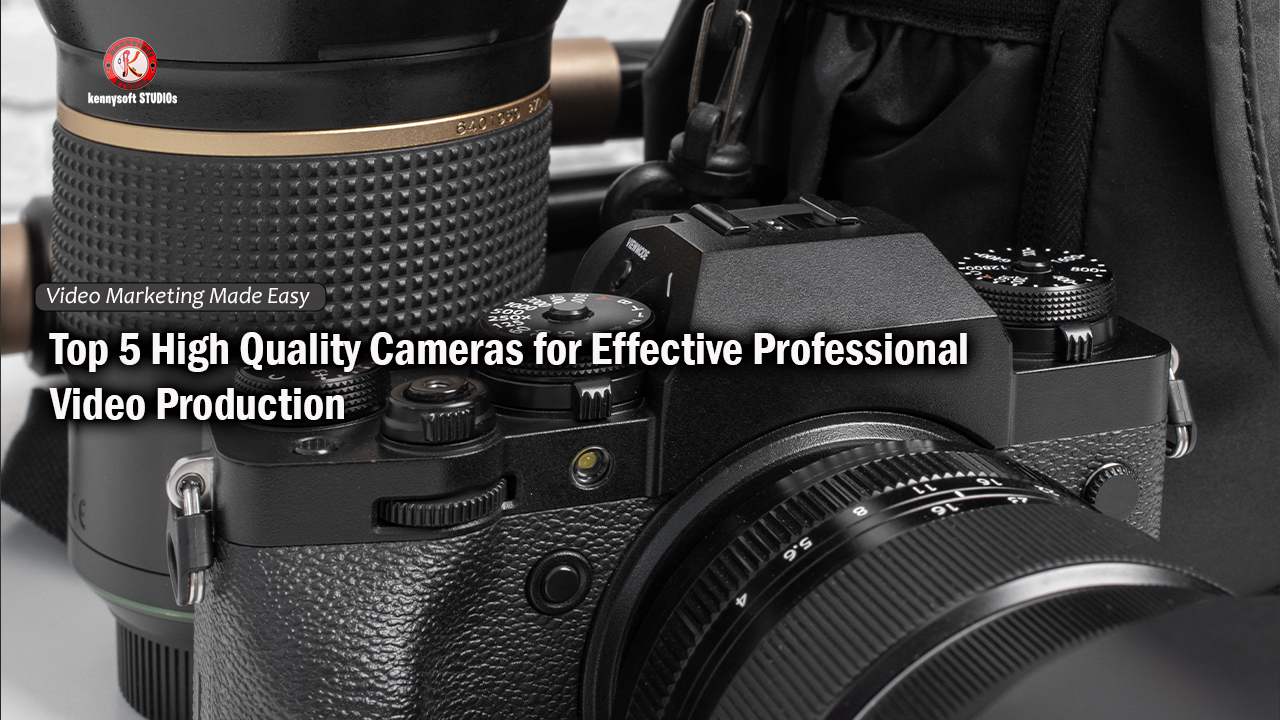High Quality video cameras are different from regular cameras you might use for home videos. They offer better image quality, more control over how your video looks, and special features that help create professional-looking content.
A high-quality camera is the cornerstone of professional video production with professional tools which empower creators to bring their visions to life with precision and impact. It is designed to capture video or still images with exceptional clarity, color accuracy, and detail.
For effective professional video production, the choice of camera can make or break a project. Whether you’re shooting a cinematic masterpiece or a corporate video, having the right camera is essential for achieving outstanding results. Below are the top 5 high-quality cameras picks that can elevate your video production to the next level.
Top 5 High Quality Cameras for Functional Professional Video Production
Sony FX6
The Sony FX6 is a compact yet powerful full-frame cinema camera, perfect for filmmakers who value portability without compromising quality. It’s small enough to carry around easily but powerful enough for professional work.
Key Features:
- 4K Full-Frame Sensor for stunning visuals with rich detail and dynamic range.
- Real-time Eye Autofocus and Face Detection for seamless subject tracking.
- Compact and lightweight design, ideal for handheld shooting and on-the-go projects.
Why It’s Great for Professionals: The FX6 combines the flexibility of a mirrorless camera with the advanced features of a cinema camera, making it an excellent choice for indie filmmakers and documentary creators.
Canon EOS C70
The Canon EOS C70 is a revolutionary camera that bridges the gap between DSLRs and cinema cameras, offering professional-grade features in a user-friendly design. It bridges the gap between simple and professional cameras.
Key Features:
- Super 35mm 4K DGO Sensor for exceptional low-light performance and high dynamic range.
- Dual Pixel CMOS Autofocus for precise focusing during complex shots.
- Built-in ND filters and a compact form factor for versatile shooting conditions.
Why It’s Great for Professionals: The C70’s compact size and robust features make it ideal for corporate videos, commercials, and run-and-gun filmmaking.
Blackmagic URSA Mini Pro 12K
Blackmagic’s URSA Mini Pro 12K is a groundbreaking camera that delivers unparalleled resolution and detail for high-end productions. It is handy when you need the absolute highest quality possible.
Key Features:
- 12K Super 35 Sensor for extraordinary clarity and detail.
- 14 stops of dynamic range for capturing stunning highlights and shadows.
- Built-in ND filters and dual CFast and SD card slots for seamless workflows.
Why It’s Great for Professionals: This camera is a game-changer for filmmakers working on feature films and commercials that demand the highest quality visuals.
RED Komodo 6K
The RED Komodo 6K is a compact cinema camera that packs a punch, offering the renowned RED image quality in a more affordable package. This camera packs professional features into a smaller size, making it perfect for tight spaces and action shots.
Key Features:
- 6K Global Shutter Sensor for crisp, motion-artifact-free images.
- Compact and modular design for maximum flexibility.
- Wireless control capabilities for remote shooting.
Why It’s Great for Professionals: The Komodo’s compact size and robust image quality make it perfect for drone work, action shots, and indie filmmaking.
Panasonic Lumix S1H
The Panasonic Lumix S1H is a hybrid camera that combines professional video features with the convenience of a mirrorless system. This camera is fantastic for people who need both photos and videos.
Key Features:
- Full-frame 6K video recording for unparalleled detail.
- V-Log/V-Gamut for cinematic color grading.
- Dual native ISO for superior low-light performance.
Why It’s Great for Professionals: The S1H’s versatility and hybrid functionality make it an excellent choice for content creators, wedding videographers, and filmmakers who need a reliable all-in-one solution.
How to Choose the Right Camera
Ask yourself these simple questions:
- What kind of videos will you make most often?
- How much money can you spend?
- Do you need to carry it around a lot?
- Do you need both photos and videos?
Simple Breakdown by Video Type
- Making a Movie: Go for the Blackmagic URSA Mini Pro 12K or Sony FX6
- Corporate Videos: Canon EOS C70 is your best bet
- Wedding Videos: Panasonic Lumix S1H works great
- Action Shots/Drone Work: RED Komodo 6K is perfect
- Documentary Making: Sony FX6 is ideal
Final Thoughts
The professional video camera market offers diverse options to meet varying production needs. From the versatile Sony FX6 to the resolution-packed Blackmagic URSA Mini Pro 12K, each camera brings unique strengths to professional video production. Understanding your specific requirements and how each camera’s features align with your goals will help you make an informed decision that enhances your production value.
You don’t always need the most expensive camera – you need the right camera for your specific needs. Each of these cameras is excellent, but they shine in different situations. Choose based on what you’ll use it for most often, and you’ll be much happier with your decision.
Remember, by investing in a high-quality camera, you can ensure that your productions stand out with exceptional visuals and storytelling.
